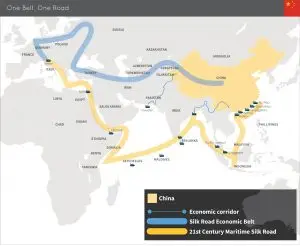
The challenges of climate change include unprecedented opportunities to re-imaging social and physical infrastructure.
You’ve probably heard of the Silk Road, the ancient trade route that once ran between China and the West during the days of the Roman Empire. It’s how oriental silk first made it to Europe. It’s also the reason China is no stranger to carrots.
And now it’s being resurrected. Announced in 2013 by President Xi Jinping, a brand new double trade corridor is set to reopen channels between China and its neighbours in the west: most notably Central Asia, the Middle East and Europe.
According to the Belt and Road Action Plan released in 2015, the initiative will encompass land routes (the “Belt”) and maritime routes (the “Road”) with the goal of improving trade relationships in the region primarily through infrastructure investments.
The aim of the $900 billion scheme, as China explained recently, is to kindle a “new era of globalization”, a golden age of commerce that will benefit all. Beijing says it will ultimately lend as much as $8 trillion for infrastructure in 68 countries. That adds up to as much as 65% of the global population and a third of global GDP, according to the global consultancy McKinsey.
But reviews from the rest of the world have been mixed, with several countries expressing suspicion about China’s true geopolitical intentions, even while others attended a summit in Beijing earlier this monthto praise the scale and scope of the project.
The project has proved vast, expensive and controversial. Four years after it was first unveiled, the question remains:
Why is China doing it?
Leave a Reply